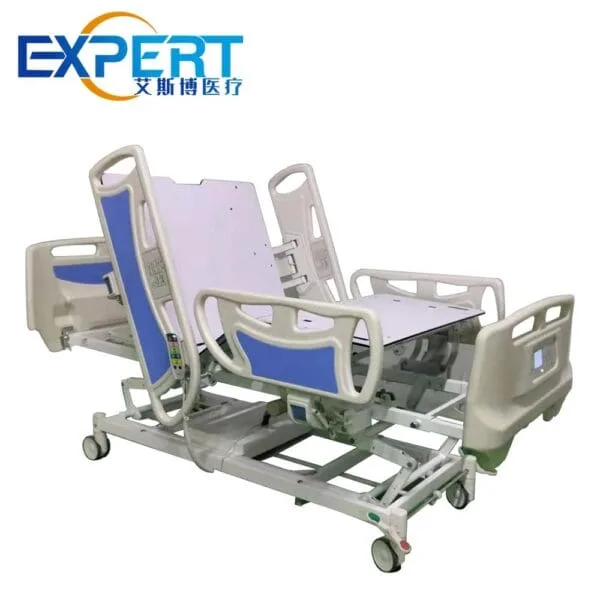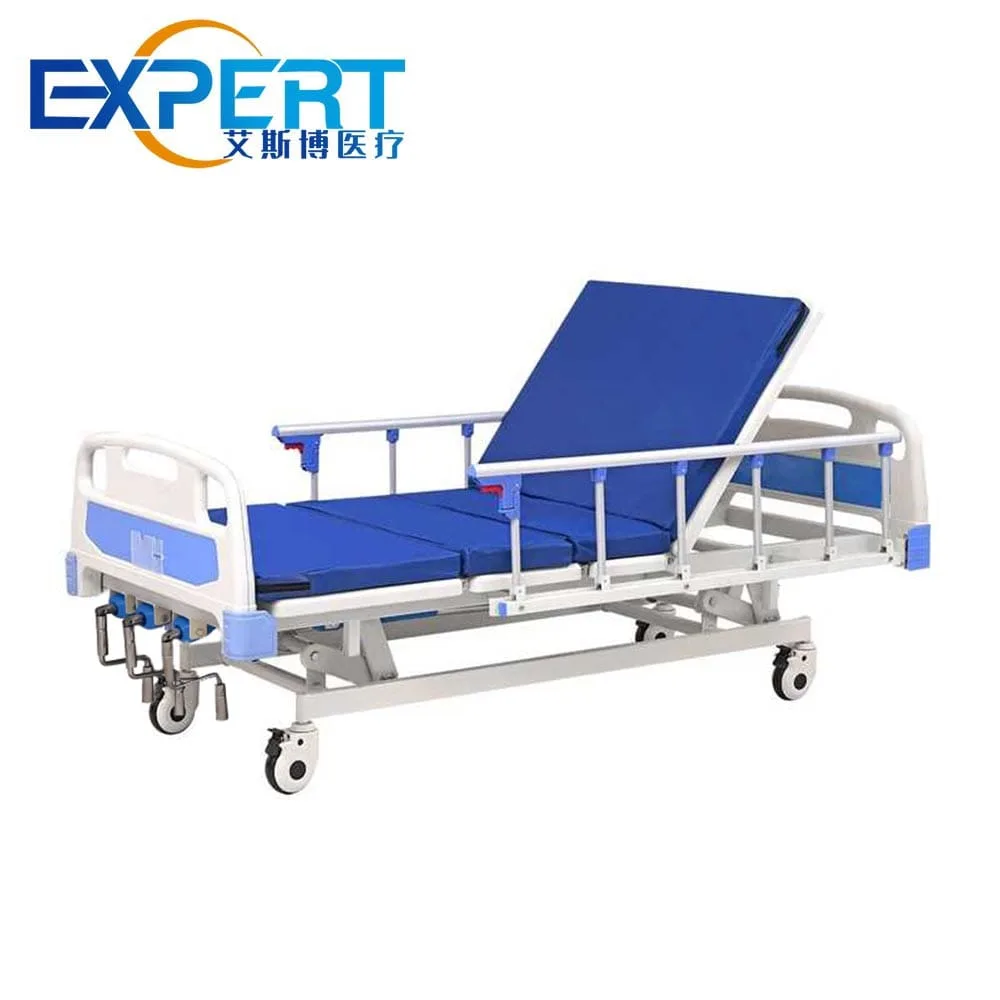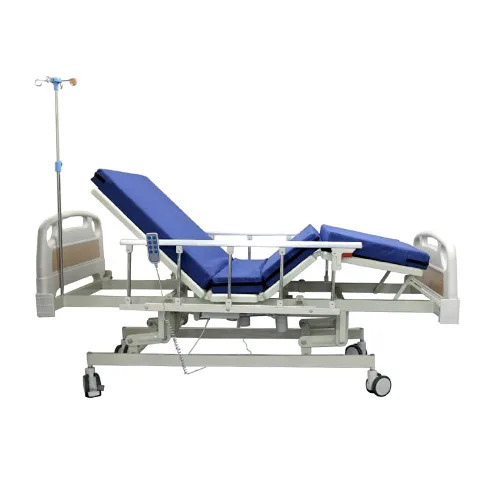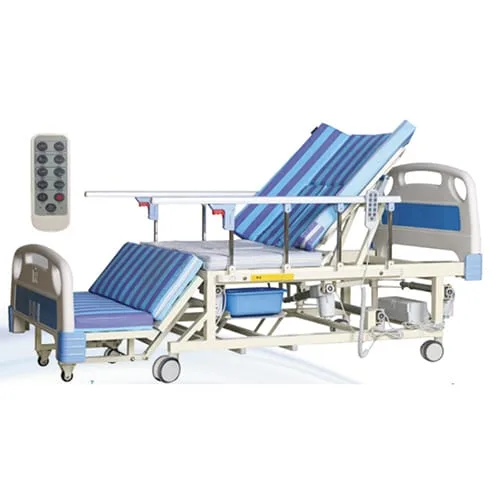Indirizzo
304 Il cardinale nord S.
Dorchester Center, MA 02124
Ore di lavoro
Dal lunedì al venerdì: 7:00 - 19:00
Fine settimana: 10:00 - 17:00
Indirizzo
304 Il cardinale nord S.
Dorchester Center, MA 02124
Ore di lavoro
Dal lunedì al venerdì: 7:00 - 19:00
Fine settimana: 10:00 - 17:00

The right types of hospital bed can significantly impact a patient's comfort, recovery, and overall well-being.
Benvenuti nel mio blog!
Prima di immergerci nei contenuti, mi piacerebbe che ti unissi a me sulle mie piattaforme social, dove condivido altre intuizioni, interagisco con la community e pubblico aggiornamenti. Ecco come puoi metterti in contatto con me:
Facebook:https://www.facebook.com/profile.php?id=100071234835011
LinkedIn:https://www.linkedin.com/company/74943205/admin/dashboard/
YouTube:www.youtube.com/@shandongexpertmedicalequip4695
TikTok:www.tiktok.com/@expertmedical
Ora, iniziamo il nostro viaggio insieme. Spero che tu trovi il contenuto qui perspicace, coinvolgente e prezioso.

In the realm of healthcare, the importance of a proper hospital bed cannot be overstated. The right types of hospital bed can significantly impact a patient’s comfort, recovery, and overall well-being. From basic manual beds to advanced electric models, the variety of types of hospital bed available caters to diverse patient needs. Understanding these different types of hospital bed is crucial for healthcare professionals and caregivers alike. This blog post aims to provide a comprehensive overview of the various types of hospital bed, helping you find the perfect fit for your patients.
Manual hospital beds are the most basic types of hospital bed, operated by hand cranks. These beds offer simplicity and reliability, making them a cost-effective option for many healthcare facilities.


Electric hospital beds are a significant advancement in patient care. These types of hospital bed use electric motors to adjust the bed’s position, providing enhanced comfort and convenience for both patients and caregivers.
Semi-electric hospital beds offer a middle ground between manual and full electric beds. Typically, the head and foot adjustments are electric, while the height adjustment is manual.
Beyond the standard manual and electric beds, there are several specialty types of hospital bed designed to address specific patient needs.
Here’s a table summarizing the key features of different types of hospital bed:
| Tipo di letto | Caratteristiche principali | Vantaggi | Svantaggi | Ideale per |
|---|---|---|---|---|
| Letti ospedalieri manuali | Manual crank adjustments | Cost-effective, reliable | Manual effort required, limited positioning | Patients with minimal mobility needs |
| Letti ospedalieri elettrici | Electric adjustments for all positions | Effortless adjustments, enhanced comfort | Higher cost, requires electricity | Patients with significant mobility limitations |
| Semi-Electric Hospital Beds | Electric head and foot. manual height | Balance of cost and electric function | Height adjustments require manual effort | Those who want some electric functions, but have a budget. |
| Bariatric Beds | Telaio rinforzato, maggiore capacità di carico | Accommodates larger patients, durable | Higher cost, larger size | Pazienti bariatrici |
| Low Air Loss Beds | Air-filled mattress, pressure reduction | Prevents bedsores, improves circulation | Higher cost, requires maintenance | Patients at high risk of skin breakdown |
| Trendelenburg Beds | Tilting positions | Used for specific medical procedures | Not suitable for all patients | Patients requiring specific medical positioning |
| Rotational Therapy Beds | Constant patient rotation | Prevents pulmonary complications and bedsores | Higher cost, complex operation | Patients with severe injuries or illnesses |
| Letti ospedalieri pediatrici | Smaller size, child safety features | Designed for young patients, safe | Can be expensive | child patients. |
When selecting types of hospital bed, several factors should be considered:
Proper maintenance and care are crucial for ensuring the longevity and functionality of hospital beds. Regular cleaning, inspections, and timely repairs are essential.

Hospital beds play a vital role in patient recovery by providing comfort, support, and facilitating medical treatments. The right bed can significantly impact a patient’s healing process.
Scegliere il giusto types of hospital bed is essential for providing optimal patient care. Understanding the different types of hospital bed and their features can help healthcare professionals and caregivers make informed decisions. From manual to electric and specialty beds, there is a wide range of options available to meet diverse patient needs. Invest in quality and patient comfort today. For any purchase inquires, please contact us.
What is the difference between manual and electric letti d'ospedale?
Manual beds are operated by hand cranks, while electric beds use electric motors for adjustments.
What are bariatric beds used for?
Bariatric beds are designed for patients with higher weight capacities.
How do low air loss beds prevent bedsores?
Low air loss beds use air-filled mattresses to reduce pressure and improve circulation.